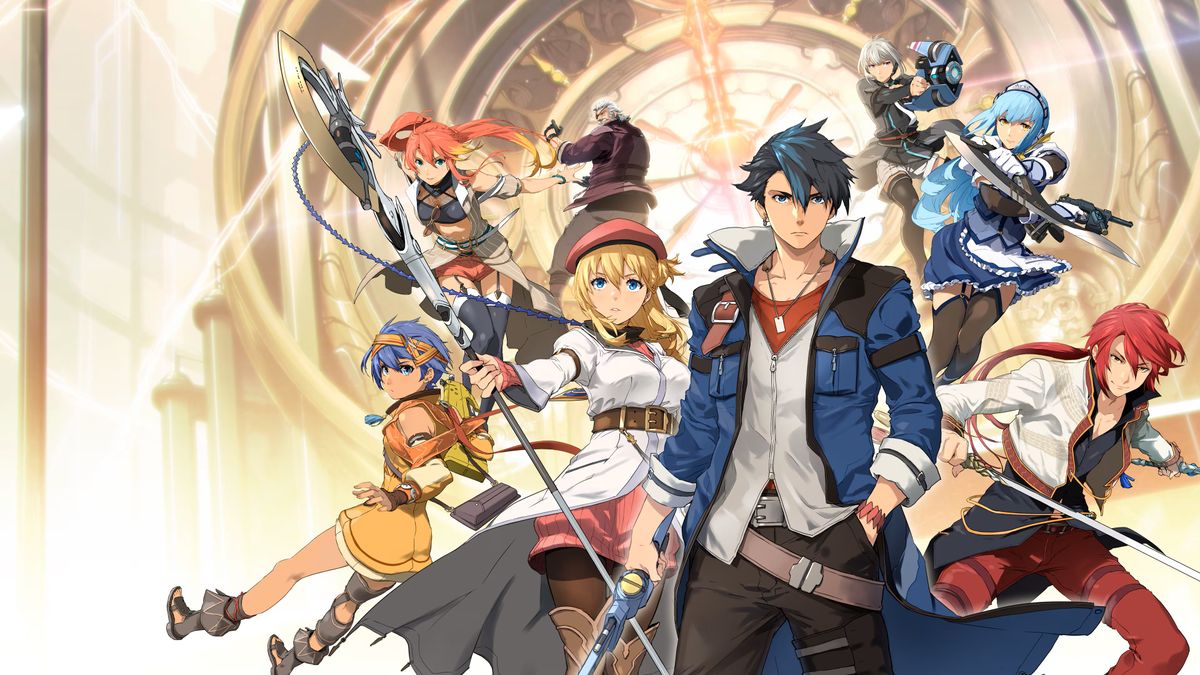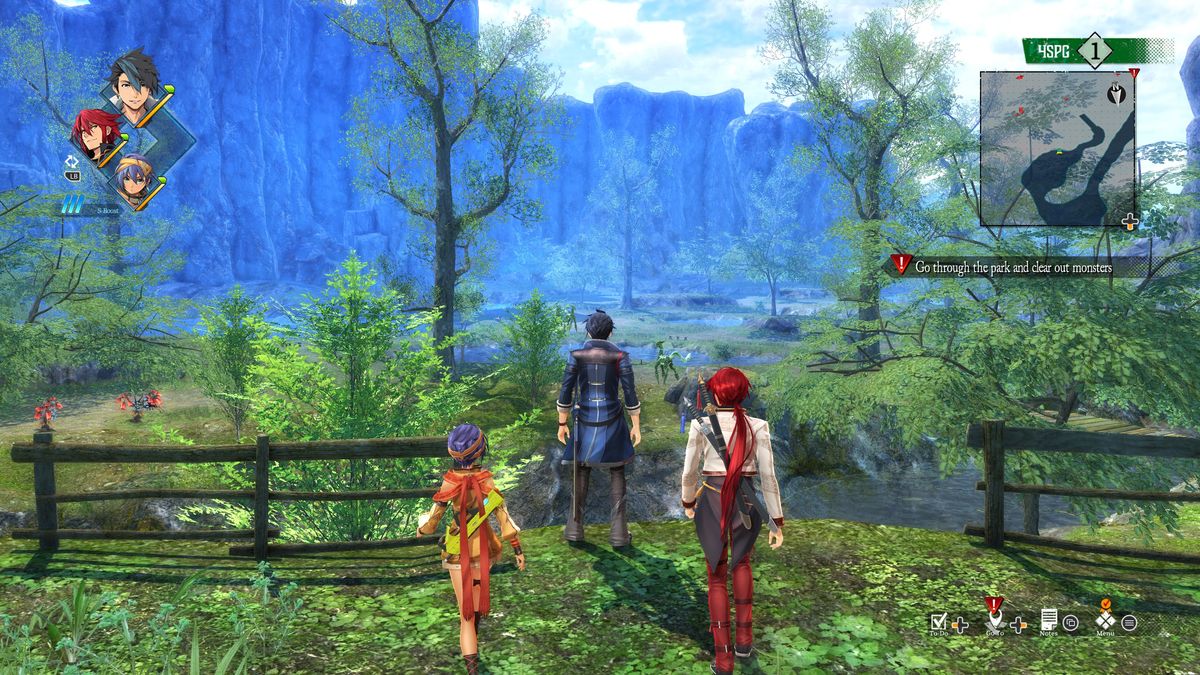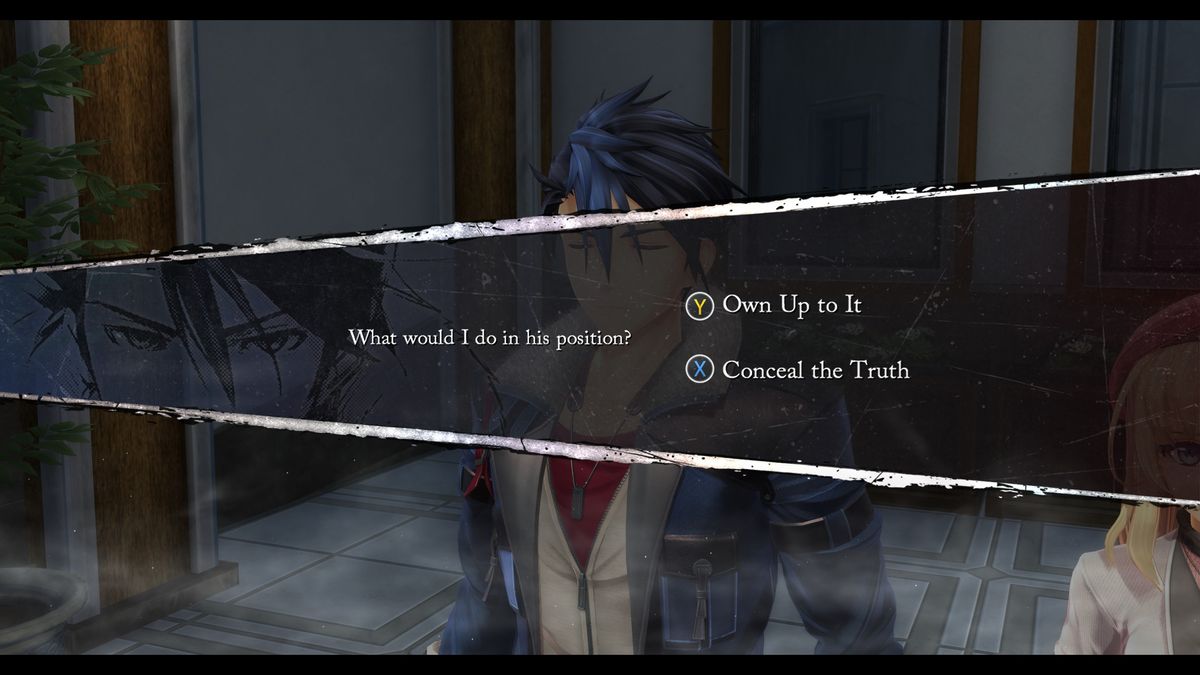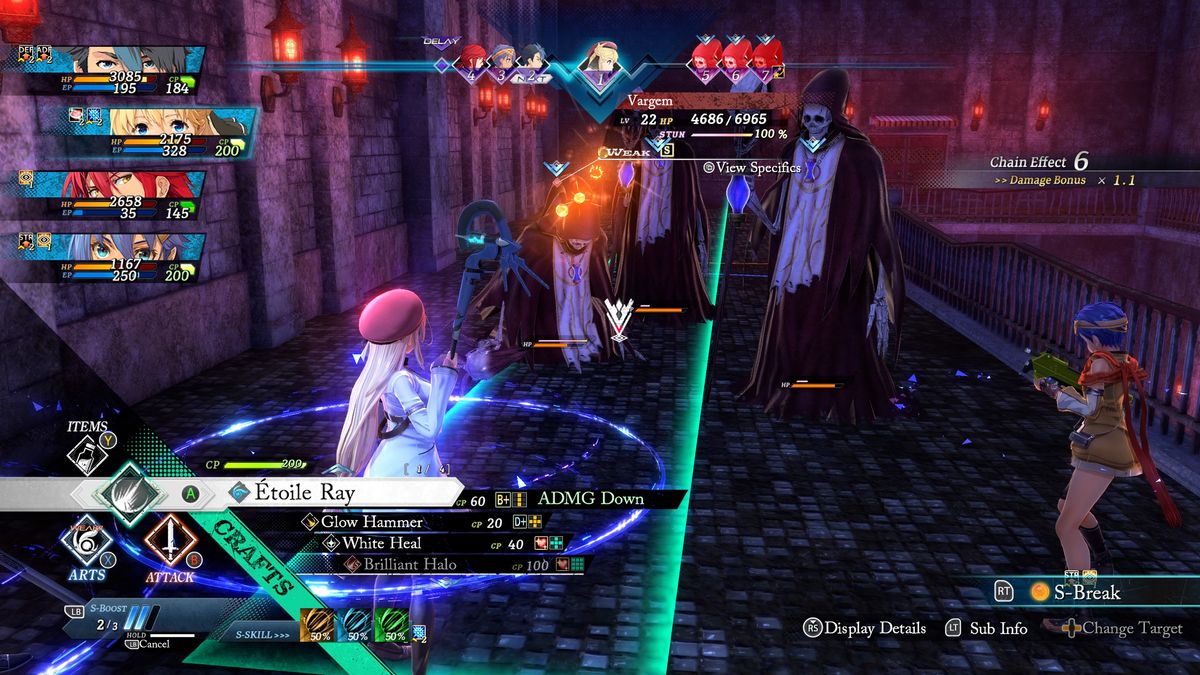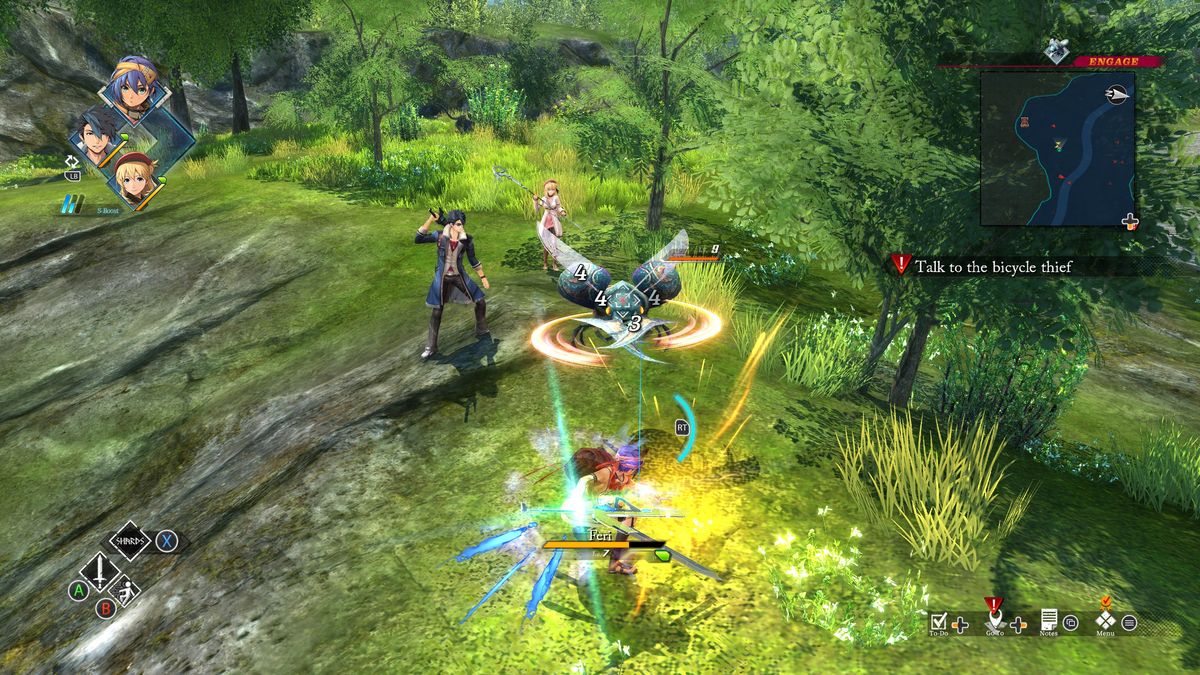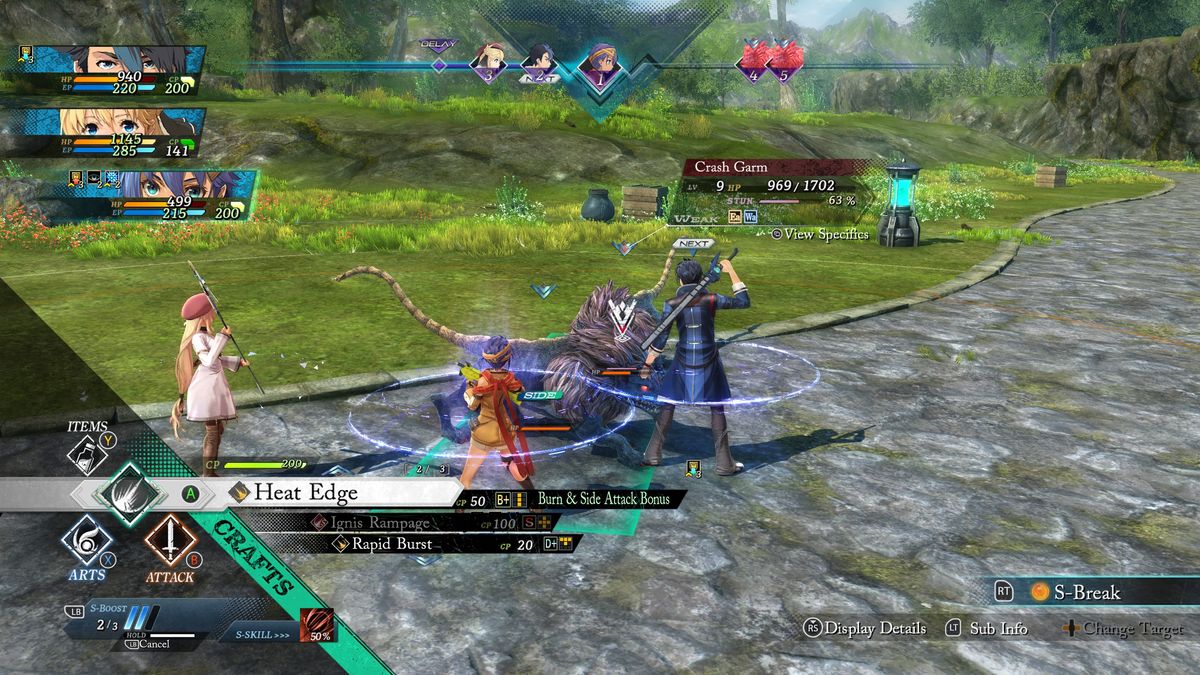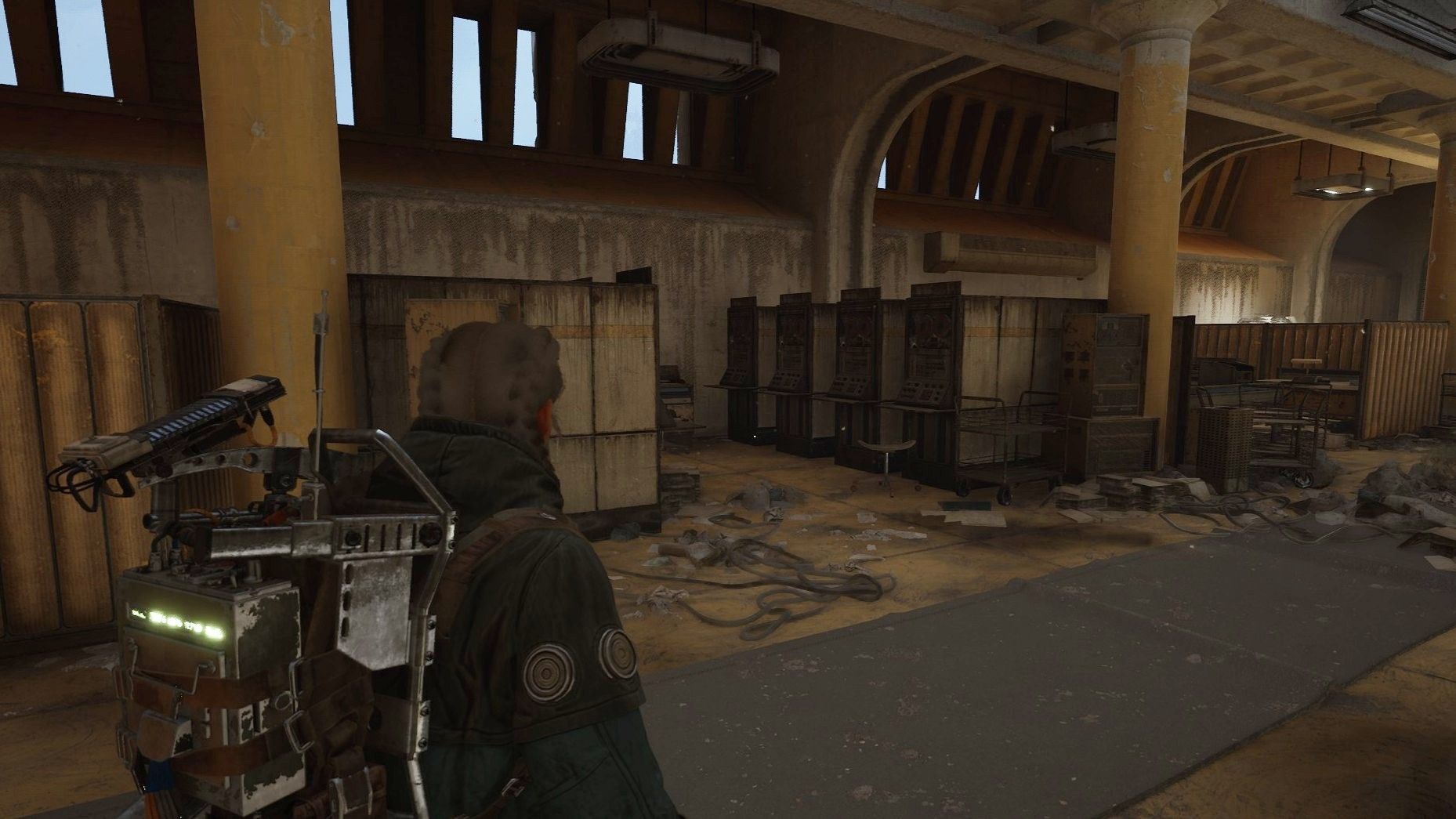My favorite moments in Trails through Daybreak were, somewhat ironically, all set at night, when frosty protagonist Van Arkride would slip away from the boisterous party of teens and young adults growing under his wing to get some quiet—and drop the act. He goes to the movies and bumps into an old friend, now flourishing after he helped her find a new family years ago. He drops in on his old flame and they dance around their desire to spend more time together. He does a sidequest for the ghost of a long dead child.
For as much as The Legend of Heroes’ Trails series is a sprawling epic with dozens of characters and ballooning geopolitical conflict, all that grandiose world building matters to me only because Nihon Falcom is a master of place making. For all the action and drama, I’ve always returned to the series to get cozy in my chair and hang out in the fictional world of Zemuria. And now, as a new day dawns in the series’ 11th mainline game, everyone has a little room to breathe.
Daybreak, out in English on July 5, is like other Trails games, just with a different flavor. My RPG party travels around the nation helping people and slowly getting entwined in the machinations of anime super villains pulling the strings of military and industry. Daybreak’s bent on this is that instead of playing a law-abiding cop (Trails from Zero), a do-good bracer (Trails in the Sky), or student-turned-soldier (Trails of Cold Steel), you’re a spriggan—a for-hire fixer who can be a detective or a mercenary for the right price. Coupled with Van’s age (24, which I’m told by my party is old), Daybreak fleshes out not just a new region of Zemuria and its shadier organizations, but offers us a glimpse into the world that previous perspective characters didn’t afford.
It’d be easy to say Trails is formulaic at this point, but here I’d call it routine. Daybreak takes us to the Calvard Republic and its capital, Edith, an anime Paris where Van spends early autumn days taking on clients as sidequests and getting roped into the bracers, mobs, and police’s arsenals. Yet at the start of every chapter, I walk across the street from Van’s apartment to a hole-in-the-wall shop to buy candy and read the newspaper. Like in past games, the hundreds of words of in-universe reporting reveal outside perspectives on your actions and color in the economic and political movements in other parts of the world. Epic science fantasy is happening, just far away right now. I have to go see what’s up on Station Street.
What makes Trails special is that most of my time in each 50+ hour game is spent reading instead of fighting or exploring (which you will still do plenty of). There are newspapers, books, and now films that speak to culture, history, and propaganda around Zemuria, but the bulk of all that reading is still dialogue. And beyond your party members and other voice-acted characters making their way into the series’ ever-expanding ensemble, there’s all the background characters around Edith and the other towns Van visits. Each has a name, relationships, and reactions to the events around them as time progresses. A familiar NPC may eventually summon my spriggan for help hours after I’ve met them.
I’m particularly invested in the trio of childhood friends living together down the block: Raymond, who runs the flower shop in Old Town and likes to share his baking with Van, a connoisseur of sweets; His sister Carol, who works at a dress shop in the Seiden district and has a crush on their third roommate; and Jess, an amateur musician on the up. One day Jess ends up hiring Van to deal with a blackmailer, exploiting his precarious reputation as an up-and-coming artist with pictures of him at a gay club. Van assures Jess that that’s not really a big deal anymore around Edith, but Jess doesn’t want to jeopardize things with his friends—or his crush.
After I track down and scrap a black book full of dirt on city residents, Jess’s story continues in the background. He performs at the local venue (you can dip into the show), gets signed to a label, and encourages Raymond to pick up his old brush and make an album cover for his first release. Sixty hours into Daybreak and I still haven’t seen how this love triangle will resolve—nor have I seen the dozens of other side stories unfolding in the background of Calvard come to their end.
Zemuria comes alive through more than just writing, though. Falcom’s composers deliver on hype and ambiance, with original compositions and familiar melodies draped over the game like a warm blanket. Architecture and environmental design showcase the breadth of Calvard’s locales (ranging from European farmland to wealthy Arabian cities to secluded Asian hot springs). And the many new character designs stand out, especially new gralsritters (an order of elite holy knights) who make their first cameos.
Daybreak is using a new proprietary engine, and it’s definitely the best-looking 3D Trails game yet. You can even flip on HDR if you want! But while I can see a solid foundation has been laid there are compromises that diminish Falcom’s otherwise ambitious vision for making these games feel “current-gen.” 3D busts in dialogue boxes remain lifeless compared to the illustrated portraits of prior games Sky and Zero. Character models are also rarely animated with bespoke movements, which are reserved for brief moments in combat and more than one dance number. They look good, but they’re rare.
And the number of NPC models is similarly economical in a way that detracts from the scope of the world Falcom’s writing establishes. I can literally see that improving in future games (Daybreak’s sequel already arrived two years ago in Japan), but here it lends a certain B-movie quality to the game.
But that sort of fits.. Daybreak’s shonen tropes and adolescent humor are mollified by its more mature side stories and adult cast, but childish anime antics remain. That’s Trails, and Daybreak is more of it—mostly all for good. In a thousand words I haven’t even mentioned Daybreak’s combat system of Arts and Crafts that Falcom has pushed to action-filled heights while retaining its strategic, turn-based form. And I love to cast La Forte and proc an Ark Feather with my Orbments, but I’m not here to get combos and max my stats.
I’m here to hang, and it’s a good time.

